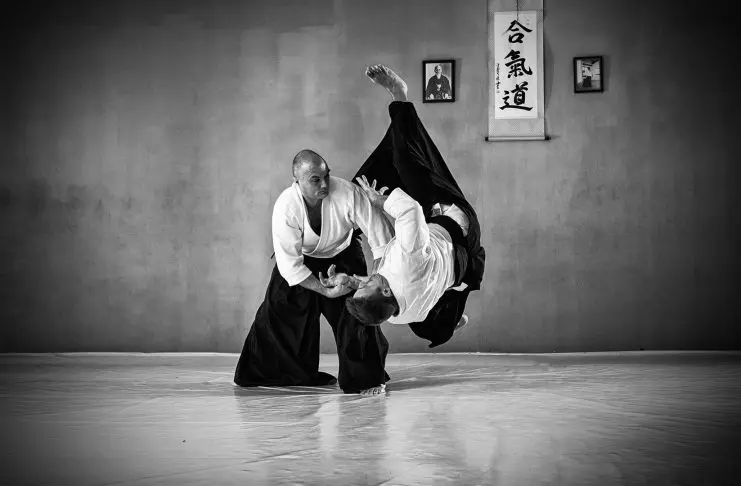Embarking on a Journey of Enlightenment through Aikido

Understanding the Principles of Harmony in Aikido
Aikido is a Japanese martial art that focuses on using the opponent's energy against them, rather than relying solely on brute force. One of the key principles of Aikido is the concept of harmony, or blending with the opponent's movements to neutralize their attacks.
Harmony in Aikido goes beyond simply evading or blocking an opponent's strike. It involves truly connecting with the attacker's energy and redirecting it in a way that diffuses the aggression and restores balance to the situation. This principle is not just about physical technique, but also about cultivating a sense of compassion, empathy, and understanding towards one's opponent.
By embracing the principle of harmony in Aikido, practitioners learn to approach conflict with a sense of calmness and control, rather than reacting with aggression or fear. This allows them to respond to attacks in a way that minimizes harm to both themselves and their opponent, promoting a sense of mutual respect and cooperation.
In practicing harmony in Aikido, students learn to move with fluidity and grace, adapting to the changing dynamics of a confrontation. By honing their sensitivity to their opponent's movements and intentions, they are able to anticipate and redirect attacks with precision and efficiency.
Beyond the physical aspect, the principle of harmony in Aikido also extends to one's interactions with others off the mat. By embodying the concepts of blending, adapting, and redirecting in their daily lives, practitioners can cultivate better relationships, resolve conflicts peacefully, and promote a sense of unity and cooperation in all aspects of their lives.
In essence, the principle of harmony in Aikido is a powerful reminder of the interconnectedness of all things. By embracing this principle both on and off the mat, practitioners can not only become more skilled martial artists, but also more compassionate and understanding individuals. So next time you step onto the mat, remember to embrace the principle of harmony in your practice, and watch how it transforms not only your Aikido technique, but also your way of approaching life itself. legit online casino
Exploring the Mind-Body Connection in Aikido
Aikido is a martial art that goes beyond physical technique and moves into the realm of mindfulness and spiritual growth. The practice of Aikido involves not only learning how to defend oneself against an opponent, but also delving deep into understanding the mind-body connection that is essential for mastering the art.
One of the key principles of Aikido is the idea of blending with your opponent's energy rather than meeting it head-on with force. This requires a deep sense of awareness and control over your own body, as well as an understanding of your opponent's movements and intentions. Through this practice, Aikido practitioners learn to respond to conflict with calmness and grace, rather than aggression or violence.
The mind-body connection in Aikido is deeply rooted in the philosophy of the art, which emphasizes harmony, balance, and unity. By cultivating a strong connection between the mind and body, practitioners are able to move with fluidity and precision, allowing them to effortlessly redirect an opponent's energy and neutralize any threat.
In order to achieve this level of control and awareness, Aikido practitioners engage in a variety of physical and mental exercises, including meditation, breathing techniques, and mindfulness practices. These practices help to sharpen the mind and calm the body, creating a state of focused presence that is essential for effective Aikido practice.
Through the exploration of the mind-body connection in Aikido, practitioners are able to develop a deeper understanding of themselves and their relationship to the world around them. By honing their awareness and control over their own bodies, Aikido practitioners are not only able to defend themselves more effectively, but also to cultivate a sense of inner peace and harmony that extends beyond the dojo walls.
In conclusion, the mind-body connection in Aikido is a fundamental aspect of the practice that goes far beyond mere physical technique. By delving deep into the philosophy and principles of the art, practitioners are able to develop a strong sense of awareness, control, and harmony that allows them to move through the world with grace and confidence. In this way, Aikido offers not only a path to self-defense, but also a path to personal growth and spiritual enlightenment.
A Closer Look at the Techniques and Movements of Aikido
Aikido, often referred to as the "art of peace," is a Japanese martial art that focuses on using an opponent's energy against them, rather than relying on brute force. The philosophy behind Aikido is rooted in harmony and non-violence, making it a unique and fascinating martial art to study.
One of the key principles of Aikido is the concept of blending with an opponent's energy. This is achieved through flowing movements and precise technique, which allow the Aikido practitioner to control and redirect their opponent's attacks without causing harm. By harmonizing with the attacker's energy, the Aikido practitioner is able to neutralize the threat and protect themselves without resorting to violence.
In addition to blending with an opponent's energy, Aikido also emphasizes the importance of using subtle movements and techniques to maintain control in a confrontation. This can include joint locks, throws, and immobilization techniques that allow the Aikido practitioner to effectively control and subdue an opponent without causing injury. By focusing on technique and precision, rather than brute force, Aikido practitioners are able to neutralize threats in a peaceful and controlled manner.
Furthermore, Aikido places a strong emphasis on mindfulness and awareness in combat situations. Practitioners are encouraged to stay calm and focused, allowing them to adapt and respond to changing circumstances with clarity and precision. By cultivating a strong sense of presence and awareness, Aikido practitioners are able to remain in control in high-pressure situations, making it a valuable skill both on and off the mat.
Overall, Aikido is a martial art that promotes harmony, non-violence, and inner peace. By mastering the techniques and principles of Aikido, practitioners are able to protect themselves and others in a peaceful and effective manner. So next time you're looking for a martial art that focuses on skill over strength, consider giving Aikido a try. You just might find a new way to approach self-defense and conflict resolution in your everyday life.
The Role of Meditation and Mindfulness in Aikido Training
Aikido is a Japanese martial art that emphasizes blending with an opponent's energy rather than opposing it directly. It is often described as a dynamic and fluid practice that requires a strong mind-body connection. While physical techniques are essential in Aikido training, the role of meditation and mindfulness cannot be overlooked.
Meditation and mindfulness play a significant role in Aikido training as they help practitioners develop a deeper understanding of themselves, their surroundings, and their opponents. By incorporating meditation and mindfulness practices into their training regimen, Aikido practitioners can cultivate a sense of calmness and focus that enables them to react calmly and efficiently in stressful situations.
One of the key principles of Aikido is the concept of "harmonizing ki," which emphasizes the importance of maintaining a peaceful and focused state of mind during training and combat. Meditation and mindfulness techniques help practitioners achieve this state of mind by teaching them to stay present in the moment, control their breathing, and maintain a clear and open mind.
In addition to helping practitioners achieve a state of mental calmness, meditation and mindfulness also help improve physical performance in Aikido. By practicing mindfulness, Aikido practitioners can enhance their awareness of body movement, balance, and alignment, which are essential for executing techniques with precision and efficiency.
Furthermore, meditation and mindfulness can also help Aikido practitioners build resilience and mental toughness. By learning to control their thoughts and emotions through meditation, practitioners can develop the mental fortitude needed to overcome challenges and adapt to unexpected situations during training and combat.
In conclusion, the incorporation of meditation and mindfulness practices in Aikido training is essential for achieving mastery in this dynamic martial art. By cultivating a strong mind-body connection through meditation and mindfulness, practitioners can enhance their performance, develop resilience, and maintain a sense of inner peace and harmony both on and off the mat. So, next time you step onto the Aikido mat, remember to take a moment to center yourself and focus your mind – your practice will thank you for it.
Applying Aikido Principles to Daily Life and Conflict Resolution
Aikido is more than just a martial art – it is a way of life that teaches us valuable lessons in conflict resolution and personal growth. The principles of Aikido can be applied to our daily lives to help us navigate difficult situations with grace and ease.
One of the key principles of Aikido is the concept of blending with your opponent’s energy rather than resisting it. This teaches us to approach conflict with an open mind and a willingness to find common ground. By practicing this principle in our interactions with others, we can create harmony and mutual understanding, even in the most challenging situations.
Another important aspect of Aikido is the idea of staying centered and grounded in the face of adversity. In Aikido, practitioners learn to remain calm and focused even when under attack, using their opponent’s own energy to guide them towards a peaceful resolution. By applying this principle to our own lives, we can learn to stay centered and balanced in the midst of chaos, allowing us to make clear-headed decisions and respond to challenges with confidence.
Aikido also teaches us the importance of mindfulness and awareness in our interactions with others. By practicing mindfulness both on and off the mat, we can become more attuned to the needs and emotions of those around us, leading to more compassionate and empathetic relationships.
In conclusion, Aikido offers us valuable insights into how we can approach conflict resolution and personal growth in a more mindful and harmonious way. By applying the principles of Aikido to our daily lives, we can cultivate a sense of inner peace and resilience that will serve us well in all aspects of life. So, the next time you find yourself in a challenging situation, remember to channel your inner Aikido master and approach the problem with an open heart and a centered mind.
Home


